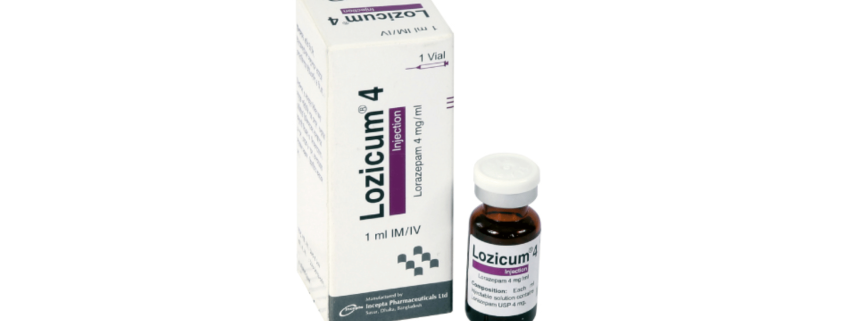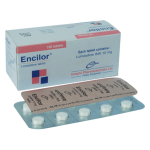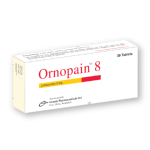Lozicum(Lorazepam)

Therapeutic Group: Drugs of Nervous System
Presentation
Lozicum 1 tablet: Each tablet contains Lorazepam USP 1 mg.
Lozicum 4 injection: Each ml injectable solution contains Lorazepam USP 4 mg.
Description
Lorazepam is a short-acting tranquilizer of the benzodiazepine group. It is an agonist at benzodiazepine receptors in the CNS. It exerts a depressant action on the CNS, which may be mediated by potentiating the inhibitory actions of GABA (gamma amino butyric acid) in the CNS. This will result in diminution of the ascending activating systems, particularly the serotonergic and noradrenergic pathway from brain stem or the mid-brain to the cerebral cortex.
Indications
Lorazepam tablet is used for the treatment of anxiety states; including anxiety associated with phobic & obsessional states, psychosomatic, organic or psychotic illness, insomnia associated with anxiety, nervousness, restlessness, nausea and vomiting related to chemotherapy and anticonvulsants, and as a premedicant before dental or general surgery or prior to investigative procedures where there may be discomfort. Lorazepam is not recommended in anxiety states in children but may be used as premedicant before surgery at a dose of 0.05 mg/Kg in children aged 5 to 13 years. The dosage of Lorazepam tablet should be increased gradually when needed to avoid adverse effects. When higher dosage is indicated, the evening dose should be increased before the daytime.
Lorazepam injection is used as pre-operative medication. It is also used to treat acute anxiety states, acute excitement or acute mania and to control status epilepticus.
Dosage & Administration
Lorazepam tablet is administered orally. For optimal results; dose, frequency of administration and duration of therapy should be individualized according to patient’s response. The usual range is 2 to 6 mg/day given in divided doses, the largest dose being taken before bedtime, but the largest dosage may vary from 1 to 10 mg/day. For anxiety, most patients require an initial dose of 2 to 3 mg/day given b.i.d. or t.i.d. For elderly or debilitated patients, an initial dosage of 1 to 2 mg/day in divided doses is recommended, to be adjusted as needed and tolerated. For insomnia 1 to 2 mg before bedtime and as premedicant 1 to 2 mg the night before surgery and 1 to 2 hour before surgery.
Lorazepam injection can be given intravenously or intramuscularly. Premedication (Adults): 0.05 mg/kg (3.5 mg for average 70 kg person) (For IV 30-45 minutes before & IM 60-90 minutes before); Acute anxiety (Adults): 0.025-0.03 mg/kg (1.75-2.1 mg for an average 70 kg person), Repeat 6 hourly; Status epilepticus (Adults): 4 mg intravenously; Status epilepticus (Children): 2 mg intravenously.
For IM use, undiluted Lorazepam injection should be administered. For IV use, it must be diluted with an equal volume of compatible solutions e.g. Sterile Water for Injection, Sodium Chloride Injection, 5% Dextrose Injection. The rate of injection should not exceed 2 mg per minute.
Side Effects
Adverse reactions are usually observed at the beginning of therapy and generally disappeared on continued medication or upon decreasing the dose. The most frequent adverse reactions of Lorazepam are sedation
followed by dizziness, weakness and unsteadiness.
Precautions
In patients with depression accompanying anxiety, a possibility for suicide should be borne in mind. For
elderly or debilitated patients, the initial daily dosage should not exceed 2 mg in order to avoid over sedation.
The usual precautions for treating patients with impaired renal or hepatic function and with acute and chronic
pulmonary insufficiency should be observed.
Use in Pregnancy & Lactation
Safety of Lorazepam in pregnancy has not been established. Because the use of this drug is rarely a matter
of urgency, the use of Lorazepam during this period should almost always be avoided.
It is not known whether Lorazepam is excreted in human milk like other benzodiazepine tranquilizers. As a
general rule, nursing should not be undertaken while a patient is on a drug since many drugs are excreted in
human milk.
Drug Interaction
Lorazepam may potentiate the central depressant effect when combined with other drugs with central depressant action. Such drugs include alcohol, general anesthetics, tricyclic antidepressants and monoamine oxidase inhibitors.
Over Dose
Overdosage of Lorazepam is usually manifested by varying degrees of central nervous system depression ranging from drowsiness to coma. In mild cases, symptoms include drowsiness, mental confusion and lethargy. In more serious cases and especially when other drugs or alcohol were ingested, symptoms may include ataxia, hypotonia, hypotension, hypnotic states (stages I to III), coma.
Storage
Tablet: Do not store above 30°C. Keep away from light and out of the reach of children.
Injection: Store 2-8 °C at refrigerator. Do not freeze.
Commercial Pack
Lozicum 1 Tablet: Each box containing 10 blister strips of 10 tablets.
Lozicum 4 Injection: Each box contains 1 vial of 1 ml injection.



